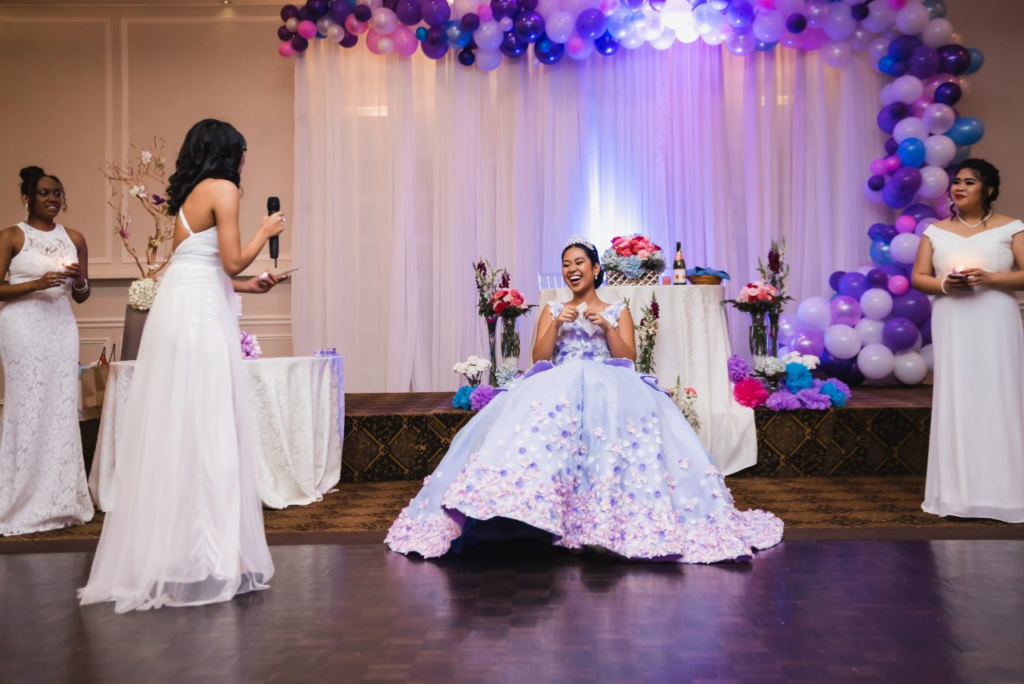The Pinoy Debut, a grand celebration marking a young Filipina’s coming-of-age at eighteen, is a vibrant tapestry woven with threads of indigenous customs, Spanish colonial influence, and modern adaptations. More than just a party, it’s a significant milestone, a formal introduction of the debutante to society, and a symbolic transition into womanhood. Understanding the history and evolution of this cherished tradition reveals a fascinating journey of cultural fusion and enduring family values.
Early Influences: Before the Gown and the Ballroom

While the elaborate debut we know today is a relatively recent phenomenon, the concept of marking a young woman’s transition into adulthood has deep roots in pre-colonial Filipino societies. Indigenous communities had their own rituals and ceremonies to celebrate a girl’s passage into womanhood. These often involved teachings about womanhood, community responsibilities, and preparation for marriage. While specific details vary across different ethnolinguistic groups, these rites of passage emphasized the importance of family and community in guiding a young woman’s journey. These ancient practices laid the foundation for the emphasis on family involvement and social recognition that remains central to the modern Pinoy Debut.
The Spanish Influence: A Formal Affair

The Spanish colonization significantly shaped the Pinoy Debut into the formal event it is today. The Spanish introduced the “quinceañera,” a similar celebration for young women turning fifteen. This tradition, with its emphasis on formal attire, waltzes, and social graces, was adopted and adapted by the Filipino elite. Over time, the quinceañera evolved into the Pinoy Debut, shifting the age of celebration to eighteen and incorporating distinctly Filipino elements. The grand ball, the elaborate gown, and the formal program are all legacies of this Spanish influence.
The Rise of the Debut: A Symbol of Status and Family Pride

During the American colonial period, the Pinoy Debut gained further prominence, becoming a symbol of social status and family pride. For wealthy families, the debutante ball was an opportunity to showcase their affluence and social connections. The debutante, adorned in a beautiful gown, became the center of attention, signifying her family’s standing in the community. This era solidified the tradition’s association with elaborate preparations, a large guest list, and a meticulously planned program.
Modern Adaptations: Embracing Individuality and Inclusivity

In recent decades, the Pinoy Debut has undergone further evolution, reflecting changing societal values and the desire for greater individuality. While the traditional elements remain, modern debuts often incorporate personal touches that reflect the debutante’s personality and interests. Themes, unique venue choices, and personalized programs are becoming increasingly common. There’s also a growing trend towards more intimate celebrations, focusing on close family and friends rather than a large, formal gathering.
Furthermore, the concept of inclusivity is becoming more prevalent. While traditionally focused on young women, some families are now extending the debut celebration to young men, marking their transition into adulthood as well. This shift reflects a broader understanding of gender roles and a move towards celebrating all young people’s milestones.
The Core Values Endure: Family, Tradition, and Community

Despite these changes, the core values of the Pinoy Debut remain. It continues to be a celebration of family, a reaffirmation of cultural traditions, and a significant rite of passage. The debutante’s journey is supported by her family and friends, who play an integral role in the celebration. The Pinoy Debut serves as a reminder of the importance of family ties, community support, and the transmission of cultural heritage across generations. It’s a testament to the enduring strength of Filipino traditions and their ability to adapt and evolve with the times.
The Debut Program: A Structured Celebration

A typical Pinoy Debut program often includes the following elements:
Entrance of the Debutante: The debutante makes her grand entrance, often accompanied by her parents or escort.
18 Roses Ceremony: Eighteen roses are presented to the debutante by significant men in her life, each with a short message.
18 Candles Ceremony: Eighteen candles are lit by close female friends and relatives, each offering their well wishes.
Father-Daughter Dance: A traditional dance between the debutante and her father, symbolizing his guidance and support.
Grand Cotillion: A choreographed dance involving the debutante and her court, showcasing their elegance and grace.
Dinner and Reception: A feast for all the guests, accompanied by music and entertainment.
Speeches and Toasts: Family members and friends share their messages and blessings for the debutante.
Cutting of the Cake: The debutante cuts her birthday cake, symbolizing her entry into adulthood.
The Modern Debut: A Reflection of Changing Times

The Pinoy Debut continues to evolve, reflecting the changing landscape of Filipino society. While the traditional elements are still valued, modern debuts are increasingly personalized and tailored to the individual debutante. This evolution ensures that the Pinoy Debut remains a relevant and meaningful tradition for generations to come.
(FAQs) About Pinoy Debut
What is the significance of the 18 roses and 18 candles?
These ceremonies symbolize the debutante’s journey into womanhood, with each rose and candle representing a significant person in her life who has contributed to her growth and development.
Is the Pinoy Debut only for girls?
Traditionally, yes. However, some families are now including young men in the celebration, recognizing their transition into adulthood.
How much does a Pinoy Debut typically cost?
The cost can vary significantly depending on the scale of the celebration, the venue, the number of guests, and other factors. It’s important to set a budget and plan accordingly.
What is the proper attire for a Pinoy Debut?
The debutante typically wears a beautiful ball gown. Guests are expected to dress formally.
Is it okay to have a non-traditional Pinoy Debut?
Absolutely! Modern debuts are increasingly personalized. It’s important to celebrate in a way that reflects the debutante’s personality and preferences.

















































































